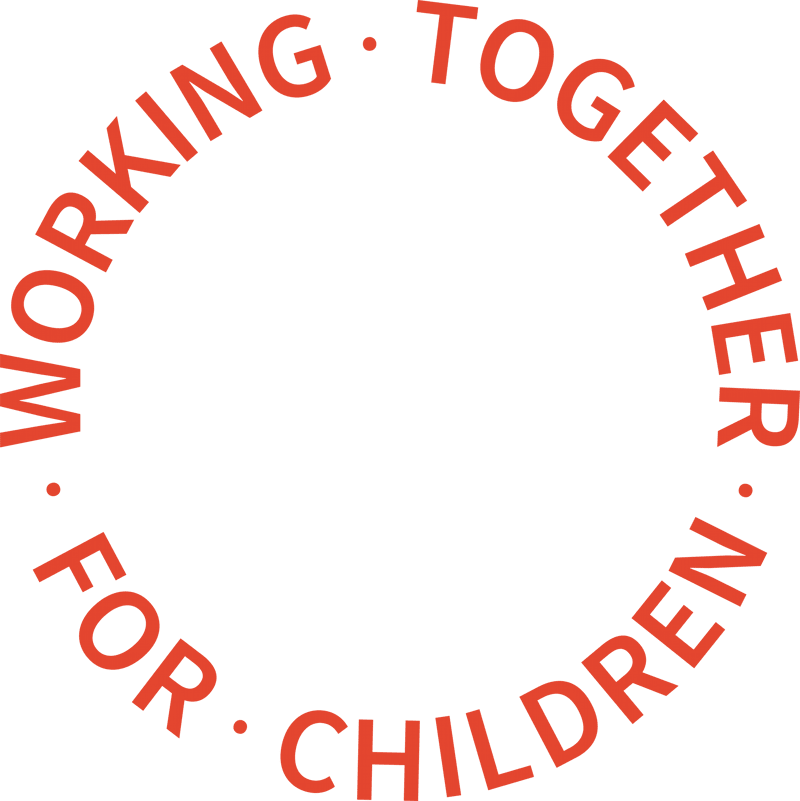Fostering and adoption expert Satwinder Sandhu on why foster parents should have legal responsibility for children in their care.
Foster parents should have legal responsibility for children in their care in a bid to prevent placements from breaking down, an expert in fostering and adoption has warned.
Currently, when children are fostered, the child remains the legal responsibility of the birth parents and the local authority if under a care order. But Satwinder Sandhu, director of operations at fostering at independent fostering agency, The Homefinding & Fostering Agency, says he is advocating for long term foster carers to have legal rights for children in their care.
“When children are adopted, the parents have legal rights and adoptions rarely break down. This is because they have a legally binding relationship that ties the family together and means families are more likely to work harder to make the relationship successful. However in fostering arrangements where there are no legal ties, it is far easier for the families to ‘give up’ when faced with problems and the placements break down,” says Sandhu.
He compares adoption and fostering to couples being married or living together. He explains that for couples living together, it is relatively easy for one party to walk away if the relationship goes through a difficult stage. But for married couples, who have to go through divorce if things don’t work out, they are more likely to try harder to make the relationship work.
Child protection wasn’t for me
Sandhu qualified as a social worker in 1995 from Bradford University where he studied the Diploma in Social Work combined with a degree in social sciences. He moved to London and he specialised in fostering and adoption immediately as his first job was in an adoption and permanence team in the London Borough of Ealing.
This was quite an unusual move as most newly qualified social workers went to work in child protection to gain vital frontline social work experience and fostering and adoption was seen very much as a role for mature social workers pre-retirement.
“I knew I didn’t want to work in child protection,” says Sandhu, “it wasn’t for me. I wanted something more positive and rewarding and fostering ticked that box. Ealing recognised that having NQSWs in child protection and more experienced social workers in permanence teams was creating old fashioned teams and were proactive in taking on a newly qualified worker.”
“It meant I specialised straight away and went on to work for three local authorities and two adoption and fostering charities. My first team manager role at Brent was for an adoption and looked-after team and throughout my career the core has been fostering and adoption,” he added.
Children in foster care should be uprooted too
In his current role at The Homefinding & Fostering Agency, Sandhu’s remit is large and covers the strategic development of the organisation, managing staff and people, learning and development, as well as managing the foster service which has 80 children in 60 households of foster carers across London and Kent.
Sandhu points out that while his charity has recruited 10 new foster carers this year, a further 7-8 have retired meaning the overall picture of foster carers has remained fairly stable. He explains there is a “geographical barrier” in the best use of foster placements as, for example, a London
Borough might need 200 foster placements in January, but the availability of spaces might be in Sunderland and there is a resistance to moving children in foster care away from schools and family and a focus on keeping them local. This is best for short term placements but not always for long term. However, again the difference in adoption is more pronounced and authorities are happy for children to be uprooted and moved if the right family was found further afield.
“I would argue that children in foster care should be uprooted too if the right foster placement became available and it was some distance away because fostering arrangements are meant to be long-term until the child is 18 and it widens the options available to children in foster care,” Sandhu explains.
He adds that children being fostered receive a “radically different” level of service than children being adopted. Far more resources and time are dedicated at the child being adopted with a nationwide search for a suitable family and support package in place whereas for a child being fostered it can feel like it is “all about the cost”.
“I would never walk into work on a Monday and have a referral for a child that needs an adoptive placement by Friday whereas I would frequently walk in to a child requiring a long-term fostering placement by Friday. People are so driven by timescales, they are not looking at the child’s needs,” he warns.
Courts favour family arrangements
Sandhu argues that all children should be placed into short-term placements initially until there can be a full evaluation of their needs to ascertain what would be the right placement for them.
Often, decisions on whether to place a child for fostering or adoption comes down to the age of the child. Many people adopting children tend to be childless or LGBT (lesbian, gay, bisexual and transgender) who don’t want to go down the surrogacy route but want to create a family of their own. There is often the belief that the younger the child, the better chance there is for the family being successful moving forwards. Although Sandhu says more adults are coming forward to adopt older children, which is fantastic, often adopters prefer younger children if possible.
Children needing long term fostering tend to be older and may have more understanding of the situation than a baby or toddler and might not want to be adopted, but still need a permanent family. The situation should always be kept under review, Sandhu warns, as circumstances change, as many children settled in long term placements do go on to be adopted by their foster carers
Sandhu says he does not believe that the government’s focus on adoption means some children are being pushed down this route when it is not suitable for them as he says courts favour family arrangements wherever possible and so if a child is on an adoption plan then in 95%-99% of cases, that is the right outcome.
“The government’s focus on adoption just means that there is a focus on one part of the population of children in care and adoption is receiving more resources and money which fostering could benefit from. But over 75% of children who are fostered will not be adopted,” he says.
I’ve seen reports lacking skill and authority
Sandhu has been working with WillisPalmer to create a Form F assessment training course for social workers which will run in June this year. “When you are doing a fostering assessment, you need to get to know the applicants and assess their suitability. The course will look at what parts of that information needs to be in the Form F assessment form.”
He explains that without appendices, the core report should be no longer than 30 pages, whereas he has seen reports that are double that in length. “The forms are an assessment and marketing tool about how best to portray potential foster carers. Social workers are essentially marketing these foster carers and the assessment form needs to promote what they have to offer. It is about distilling all the information they gathered down to what needs to be in the report. The family’s trade 50 years ago is not relevant.”
“I’ve seen assessment forms that are not conveyed with the skill and authority they needed,” Sandhu adds.
“The report should tell someone reading it who the foster carer is, what makes them the person they are and how they can use their life experience to foster a vulnerable child. It should be analytic and professional – I have no problem with a narrative, it needs to engage the reader as social workers are using the report to make decisions about a child. You have to capture what is on offer – if not you are doing the foster carer a disservice,” warns Sandhu.
Many fostering agencies operate a two-stage process for foster carers where the first stage focuses on preparation, training and statutory checks such as DBS checks and stage two incorporates the assessment. This second stage usually results in six to eight meetings between a social worker and the foster carer with each meeting lasting around two hours. Minimum standards mean that there should be no longer than eight months between the fostering application being logged and the case coming before a fostering panel.
“Nobody has a right to foster or adopt a vulnerable child so if there are any reasons for the person to be precluded, the sooner the better,” says Sandhu. “Social workers will be looking for people who can demonstrate high levels of empathy for both the child and the birth family and who have the time and space to offer that child. Social workers will also be looking for the motivation behind fostering. They will also try and bring to life how it might be once a child comes to live with the family as until a child arrives there, the situation is hypothetical,” he explains.
You need to understand you own values
Social workers conducting assessments need to be very open-minded, Sandhu adds. If two women have come forward as potential foster parents and you haven’t worked with a lesbian couple before, Sandhu says it is vital to put any pre-conceptions to one side about what you think two mother figures may bring to the arrangement. In the same way, it is important to be open-minded about race and realise that a Black family from the Caribbean is very different from a Black family originating from Africa.
“It is important that all social workers but particularly social workers in fostering and adoption understand their own values and prejudices and go in with a positive approach,” he adds.
Fostering and adoption social workers conducting Form F assessments also need:
* High levels of emotional intelligence and awareness
* To work in an open-minded way and be open to new ideas and concepts
* To be open to managing risk – (‘while we try and minimise risk, it cannot be eradicated,’ says Sandhu)
* To strike a balance in their approach and be friendly without being overly-familiar and cosy (‘as you may need to challenge applicants and you may miss things if you are too cosy,’ adds Sandhu)
Sandhu also warns that it is easy for a social worker to take something that sounds interesting and blow it out of all proportions and make it the main focus in the assessment when it shouldn’t necessarily be. For example, if someone has been married three times, it does not necessarily mean that they cannot form a stable relationship. Similarly, if someone does not have contact with their own child, it does not rule them out from fostering another child, so long as the reasons are understood and the feelings and emotions the fostering arrangement may stir up for the foster parent are dealt with appropriately.
“You do not need to be risk averse. If you labelled people with a ‘history’ as ‘unsuitable’, no one would come forward to foster,” warns Sandhu.
“The government is now focussing on fostering,” says Sandhu, “the DfE has stated that they are going to undertake a ‘stock-take’ and while we are unsure what that means, it does feel like there has been a change in focus from adoption to fostering.”
“The adoption agenda is going down the regionalisation route and local authorities are collaborating and fostering services may be asked to do the same in a few years and we need to learn from adoption and apply it to fostering,” he added.
“Understanding fostering is a really difficult task and as social workers all we can do is assess, prepare and support foster carers to do the best they can,” concluded Sandhu.
The two day Form F Assessment training is taking place on the 15th & 16th June in Stratford, London. More information is available here.



